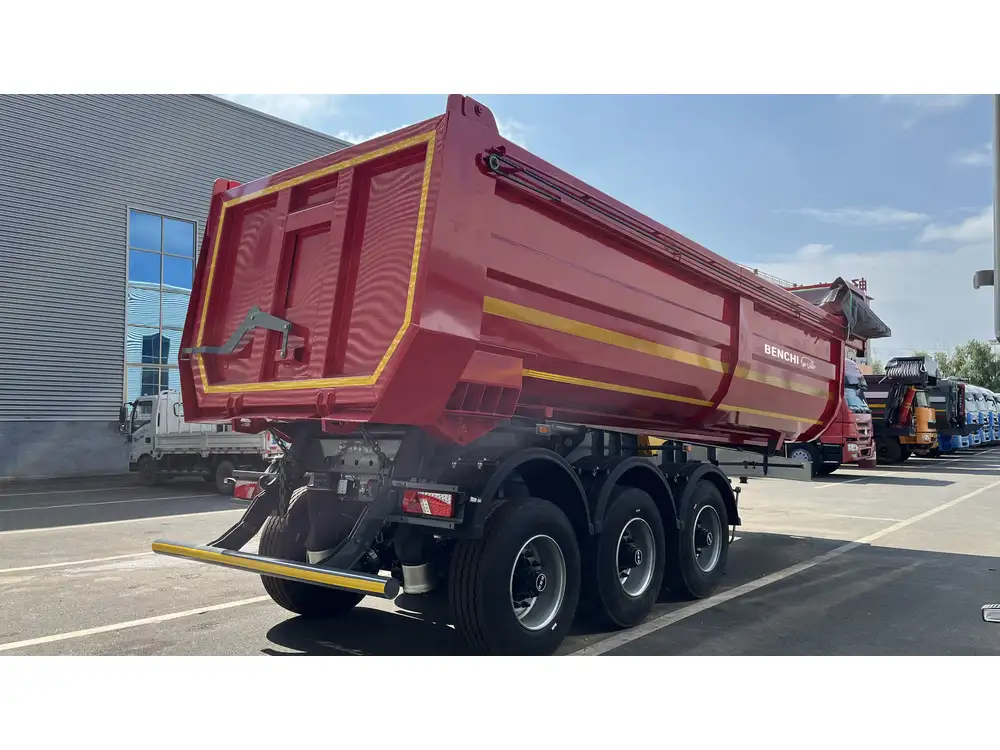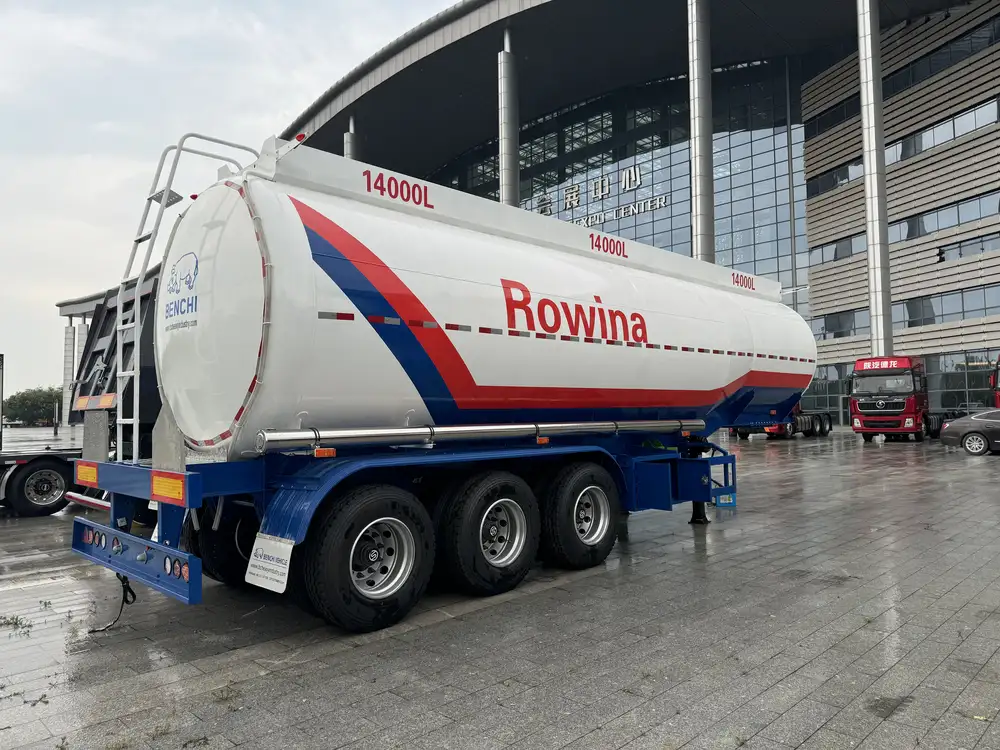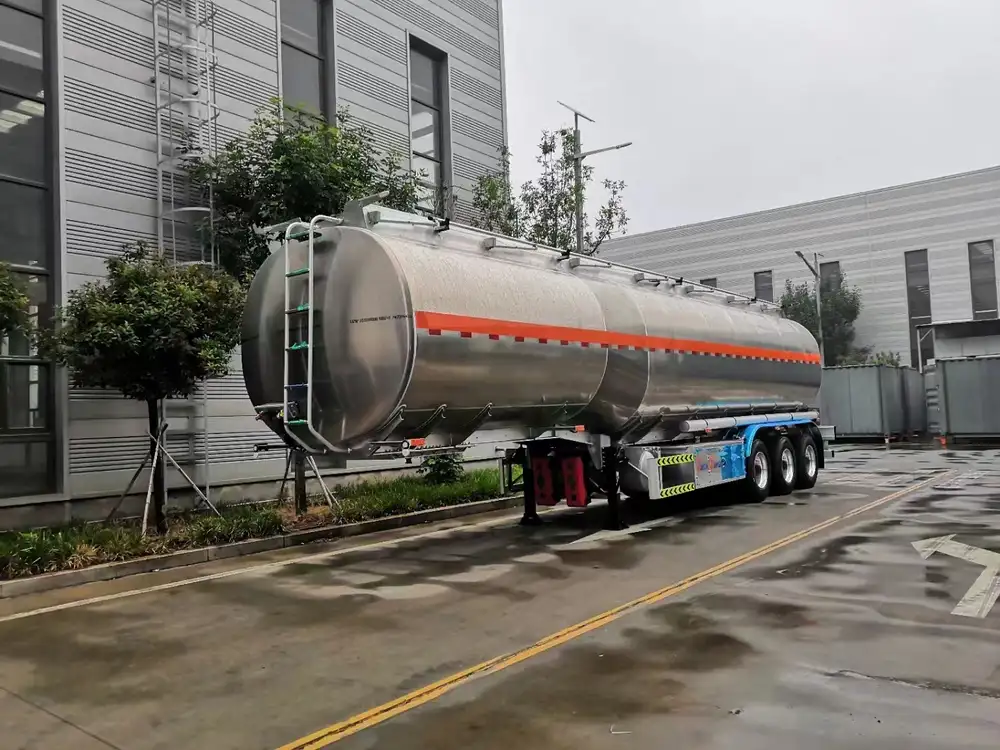Backing a semi-trailer into a tight space poses challenges that require skill, patience, and awareness. Understanding the nuances of maneuvering a trailer at a 45-degree angle is essential for any truck driver or fleet operator. This article delves into the techniques, considerations, and best practices for efficiently backing a semi-trailer, ensuring safety while enhancing productivity.
Understanding the Basics of Trailer Dynamics
Before diving into the details of backing a semi-trailer, it’s crucial to understand basic trailer dynamics. Trailers behave differently than standard vehicles, primarily due to their unique pivot point.
Key Trailer Dynamics
| Concept | Explanation |
|---|---|
| Pivot Point | The point where the trailer turns, generally located at the fifth wheel coupling. |
| Oversteering vs. Understeering | Oversteering results in excessive trailer swing, while understeering can lead to a straight-line trajectory more than intended. |
| Angle of Approach | The angle at which the trailer enters a backing area. A 45-degree angle allows for smoother maneuvering. |
Understanding these concepts lays the groundwork for mastering your backing skills.

Situational Awareness
Backing a semi-trailer requires keen situational awareness. Drivers must be aware of the surrounding environment, including other vehicles, pedestrians, and barriers. Consider these factors:
- Space Assessment: Before backing, evaluate the space available and any obstacles, such as trees, poles, or other vehicles.
- Mirror Usage: Use mirrors, including convex mirrors, to create a comprehensive view of what’s behind and alongside the trailer.
- Communication: If you have a spotter, clear communication is essential. Agree on hand signals to ensure safety.
Pre-Backing Checklist
| Aspect | Considerations |
|---|---|
| Equipment Condition | Inspect mirrors, brakes, and lights to ensure they function properly. |
| Surroundings | Look for low-hanging branches or other potential hazards. |
| Load Security | Ensure the load is secured and not shifting, affecting balance. |
Techniques for Backing a Semi-Trailer at a 45-Degree Angle

The Forward Setup
Adjusting the angle of your approach when preparing to back up is critical. Here’s how to set up correctly:
Position Your Vehicle: From a safe distance, pull forward so that your trailer is angled toward the backing space. Aim to position the trailer at roughly 45 degrees relative to the final destination.
Decide on the Direction: Determine whether you will back to the left or right, based on the external factors observed during your initial assessment.
Utilize the Pivot Point: As you begin to back up, anticipate where the pivot point will take the trailer. This anticipation allows you to adjust the vehicle’s position to maintain control.
Executing the Backing Maneuver
With setup complete, it’s time to execute:
Begin Backing: Shift into reverse, keeping your foot on the brake initially. Look both ways and ensure the path is clear.
Steering Technique:
- For a Left Back: Turn the steering wheel to the left. As the back of the trailer starts moving, observe the leading edge.
- For a Right Back: Turn the steering wheel to the right, mimicking the left approach.
Small Adjustments: Use small, controlled movements to adjust the steering. A common error is oversteering, causing the trailer to swing out too wide.
Maintaining Perspective and Control

Reference Points
Establish clear reference points. These could include the back of the loading dock or the lines of the parking area:
Aligning with Reference Points: As you back in, keep the reference points in sight, adjusting your angle as necessary.
Adjusting Speed: Always back up at a slow pace. Slow-motion allows for better reaction time and control, minimizing risk.
Common Challenges and Solutions
A. Trailer Jackknife
Problem: A jackknife occurs when the tractor and trailer form a sharp angle, leading to potential loss of control.
Solution: To prevent this, if you begin to jackknife, straighten the steering wheel and proceed in the opposite direction until the vehicle aligns again. Quick reactions are crucial.

B. Object Obstructions
Problem: Obstacles can obstruct the backing path, requiring evasive maneuvers.
Solution: Always have a plan for potential obstacles. Utilize your mirrors and spotters. If necessary, pull forward and reposition before backing up again.
C. Uneven Ground
Problem: Navigating uneven terrain can complicate the backing process, causing balance issues.
Solution: Utilize slope and geography to your advantage. If backing uphill or downhill, remain steadied and adjust accordingly. Keep in mind how gravity will affect your maneuver.
The Role of Technology in Modern Backing Techniques

Camera Systems
Advanced camera systems enhance visibility. Many modern semi-trailer units come equipped with rearview and side cameras to reduce blind spots.
Guidance Lines: These systems often include guidelines that visually represent the trailer’s intended path, allowing drivers to visualize their movements more effectively.
Distance Alerts: Sensor technology provides auditory or visual alerts when approaching obstacles, contributing to safer maneuvers.
Automatic Steering Assist
Emerging technologies now offer automatic steering assist systems designed to help trailers back up with less manual steering input.
- Navigation via Sensors: These systems utilize sensors and cameras to actively adjust steering based on the surrounding environment.
Training and Practice
Consistent training and practice are imperative for developing backing skills. Here are strategies for effective training:

A. Simulation Training
Use driving simulators that mimic backing scenarios. This approach allows for risk-free practice and offers immediate feedback.
B. Real-World Practicing
Seek out safe environments to practice backing at various angles, including the 45-degree angle. Regular practice enhances muscle memory and visual-spatial awareness.
C. Mentorship Programs
Engage with experienced drivers who can provide insights and tips based on real-world scenarios. Consider mentorship programs within your organization or community.

Summary
Mastering the art of backing a semi-trailer at a 45-degree angle involves understanding trailer dynamics, maintaining situational awareness, and employing effective backing techniques. Equipped with thorough preparation, knowledge of common challenges, and the benefits of technology, drivers can enhance their backing skills significantly.
To excel in this crucial aspect of driving, we encourage ongoing training, practice in various environments, and leveraging technology wherever possible. As the trucking industry evolves, continuous improvement in backing techniques will lead to increased efficiency and safety in operations.
By maintaining focus and refining skills regularly, we can ensure not only the success of individual drivers but the safety and efficiency of operations in the semi-trailer manufacturing and transportation industry.



